Tomb 89
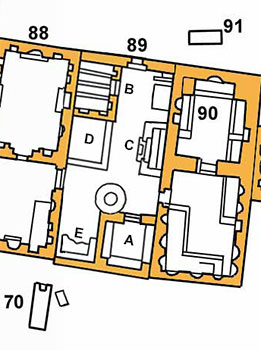 Tomb 89 was created by closing the open space between tomb 88 and tomb 90, a space originally meant as a passageway to the sea.
Tomb 89 was created by closing the open space between tomb 88 and tomb 90, a space originally meant as a passageway to the sea.
Actually it is an enclosure in which three burial chambers have been built and beside it some smaller graves.
The oven mentioned before and the well were included in the new tomb. The entrance is on the east side (the Via Severiana).
Probably the closing of the open space happened at the same time as the building of the burial chamber right next to the entrance (89B). Inside this burial chamber was a series of small niches painted with red flowers on a white background.
In later time formae have been built under the floor.
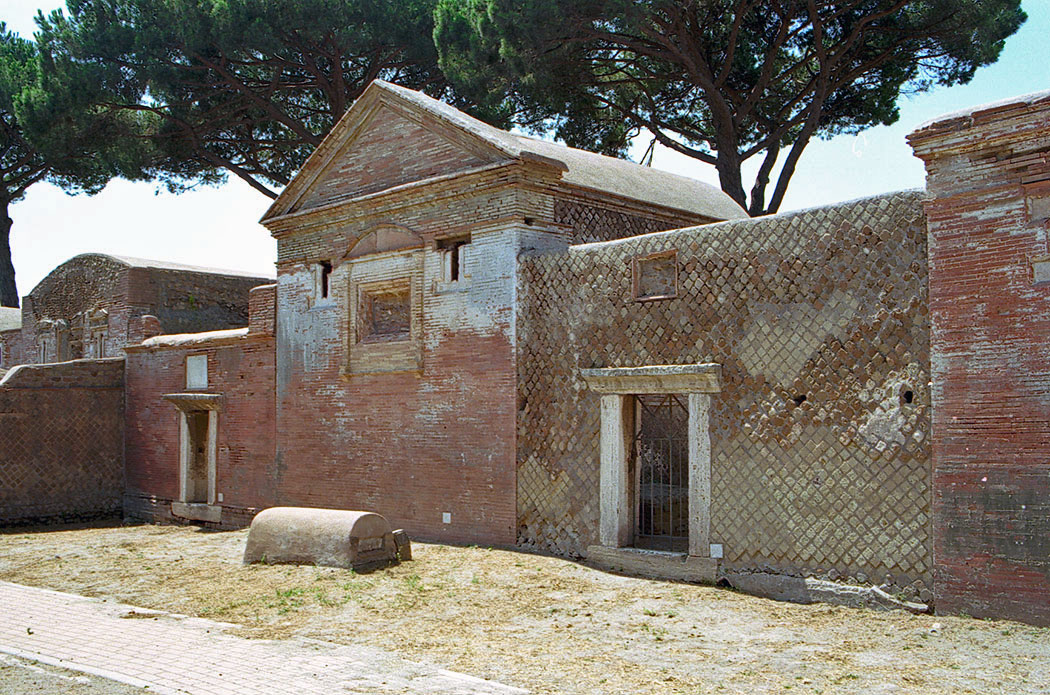
In front of tomb 90 we see the small grave 91.
Not long after the closing, a second burial chamber was built against the back wall of the enclosure and the side wall of tomb 90 (89A).
Above the entrance of this chamber we find the following inscription on a marble slab of 30 x 41 cms:
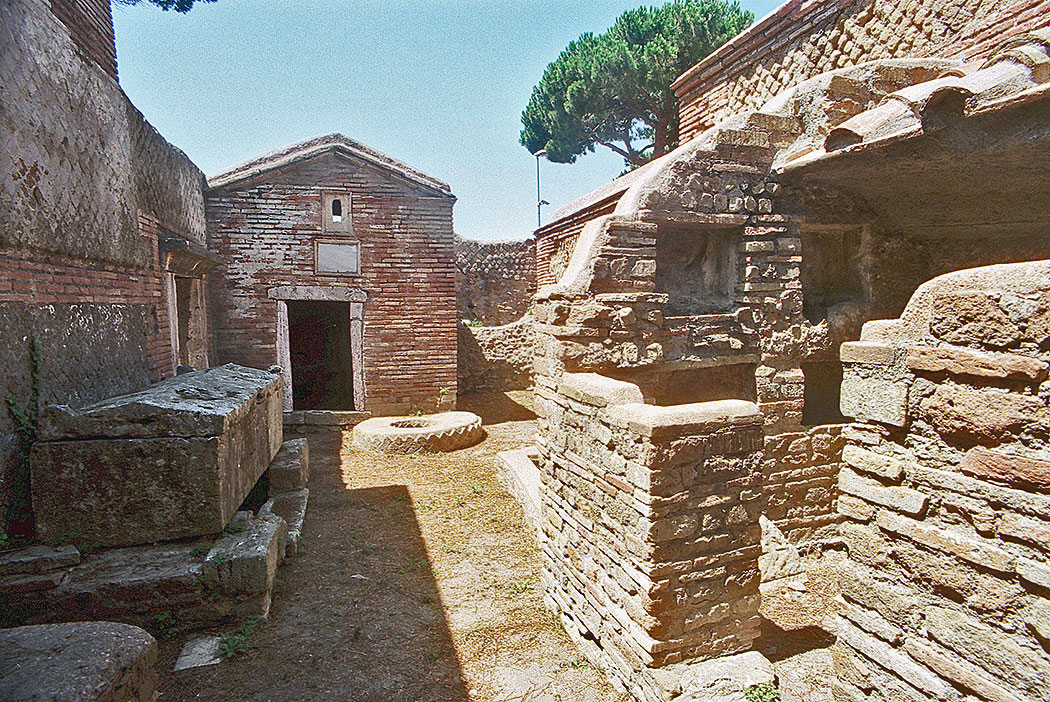
CARISSIMO MESSIA
CANDIDA FECIT ET SIBI
ET LIBERTIS LIBERTABVS
QVE POSTERISQVE EORVM
LOCVS CONCESSVS AP
GAVINIS II CRHESIMO
ET EVTYCHO ET AP ANTONIS
II IVLIANO ET POLIONE
ITV AMBITV INTROITVM
LIBERVM
Messia Candida has erected this monument for her very beloved husband and for herself, her freed slaves, and the descendants. Permission to use the place has been given by two members of the family Gabinius, Chresimus and Entychus, and two members of the family Antonius, Iulianus and Polio. Entering the terrain is allowed. 1
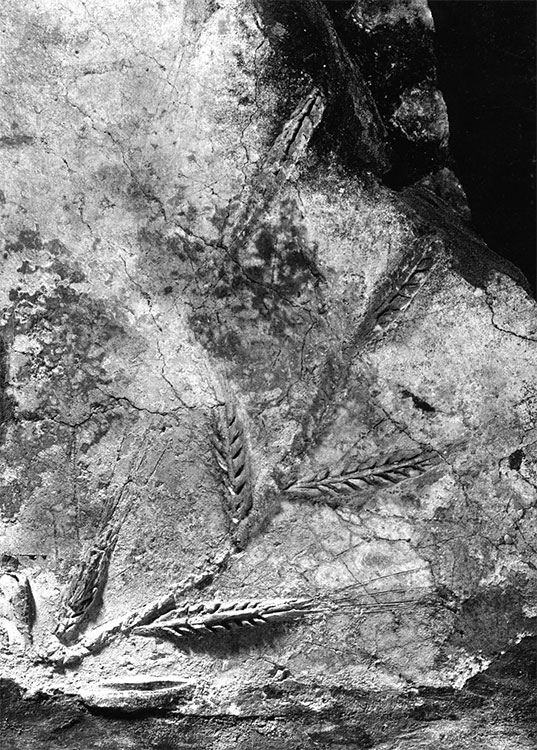
grain were found. 2
The little burial chamber called 89A was equipped for both cremation and inhumation. There were also burial places under the floor. Alongside the walls are small niches for urns and a double row of arcosolia. Between the row of arcosolia are garlands of flowers.
Tomb 89A dates back to the time of Antoninus Pius.
The third burial chamber, 89C, leans with its back wall against the left wall of tomb 90. It was a small grave exclusively for urns. Of 89C only the threshold, two blocks of travertine and a small piece of the wall have survived. In later time a sarcophagus, made of travertine, was placed on this spot, covering the whole area of tomb 89C.
The space inside the enclosure contains many other graves, tombs "a cappuccina" and with amphorae. Some of them are still visible. In a large bench of red brick (89D) against the right wall of tomb 88 and the left wall of burial chamber 89B, a number of bodies were buried. A second bench (89E) with bodies was found against the wall of tomb 88, near the oven. Finally there was a small tomb "a cassone" parallel with the façade, facing burial chamber 89C.
- Sources
- Russel Meigs - Roman Ostia, At the Clarendon Press 1973
- Guido Calza - Necropoli nell'Isola Sacra'(1940)
- Dr. Jan Theo Bakker.
- Hilding Thylander - Inscriptions du port d'Ostie (Lund C W K Gleerup 1952).
- Ida Baldassarre, Irene Bragantini, Chiara Morselli and Franc Taglietti - Necropoli di Porto, Isola Sacra (Roma 1996).
- Notes
- 1: The two Antonii are with great certainty the children mentioned in the inscription of tomb 88. The deceased father was called M. Antonius Hermes, the mother Iulia Quinta. One of the two has been named Iulianus after his mother Iulia. The Gabinii are heirs (probably sons) of the one who is burried in tomb 90, P. Gabinius Longinus: - Thylander: Inscriptions du port d'Ostie
- 2:Ears of grain. Photo: ICCD E041119.
Isola Sacra Index (D)

Speciale sectie over de Romeinse begraafplaats van Portus (Engels)....
Weiterlesen ...Leptiminus (Englisch))
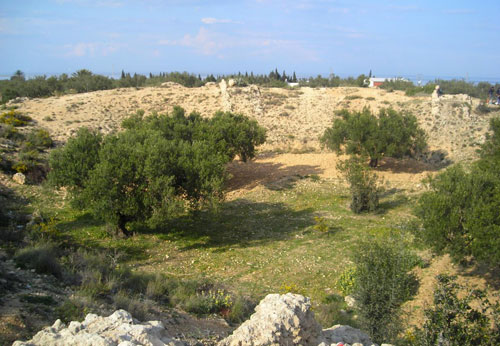
At the site of present-day Lamta on Tunisia's east coast, there was already a port city named Leptis Minor ....
Weiterlesen ...Römisches Seehandelsrecht (Englisch)

Roman law is the finest monument that Rome bequeathed to Western Europe....
Weiterlesen ...Sullecthum (Salakta) Englisch

In the Sahel, in the Tunisian province of Madhia, we find by the sea the small town of Salakta....
Weiterlesen ...Colonia Julia ad Turrem Libisonis (Englisch)

.....probably founded by Julius Ceasar around 46 BC, was located in the north-west of Sardinia.
Weiterlesen ...
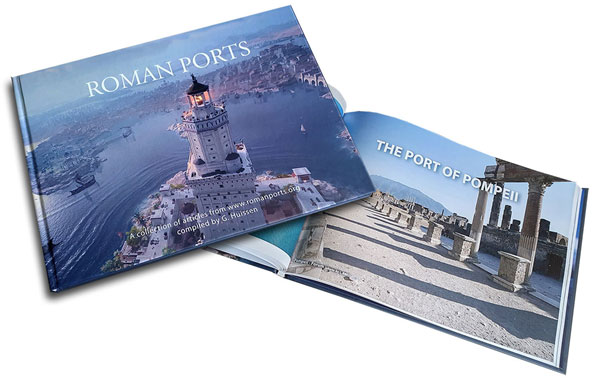
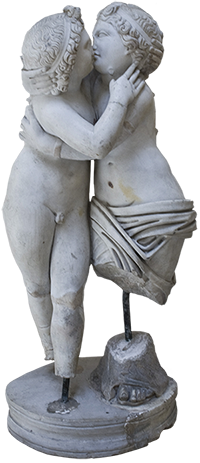 We are committed to providing versions of our articles and interviews in several languages, but our first language is English.
We are committed to providing versions of our articles and interviews in several languages, but our first language is English.